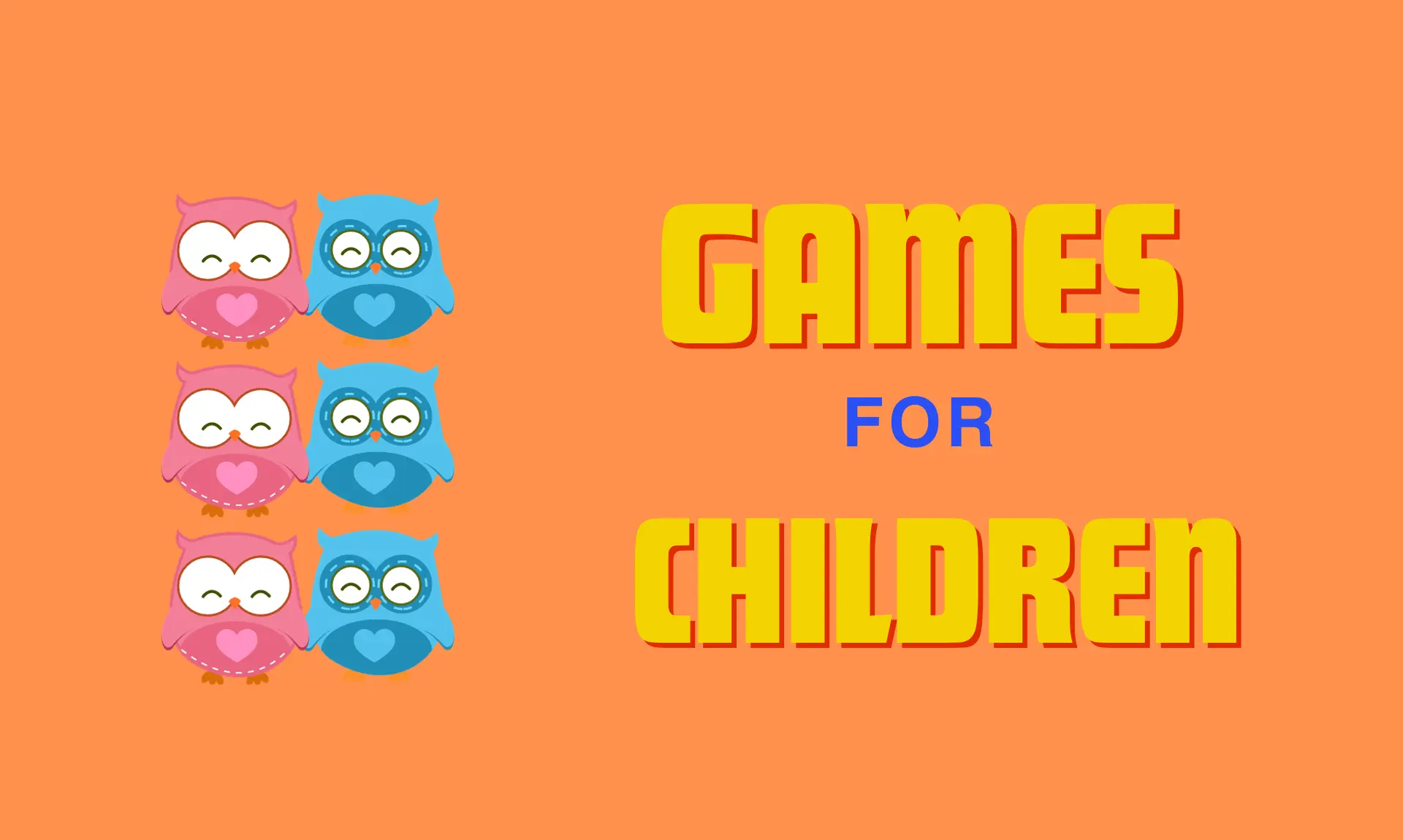Conflict Resolution – A Comprehensive Guide
Brief explanation of conflict and its prevalence
Conflict is a natural and inevitable part of human interaction, occurring when individuals or groups have opposing interests, needs, values, or goals. It manifests in various forms, ranging from subtle disagreements to intense disputes. These conflicts arise from differences in perspectives, backgrounds, experiences, or expectations. In essence, conflict is an expression of diversity in thoughts, opinions, and desires.
The prevalence of conflict is ubiquitous across personal, professional, societal, and global contexts. In personal relationships, conflicts arise from contrasting beliefs or expectations, often leading to misunderstandings and emotional discord. In the workplace, differences in work styles, objectives, or resource allocation often trigger conflicts among colleagues or within teams. At a broader level, conflicts can manifest between nations due to territorial disputes, ideological differences, or economic interests.
Understanding conflict is essential for productive resolution and growth. Conflict resolution techniques help in transforming adversarial situations into opportunities for collaboration, fostering understanding, and enhancing relationships. By acknowledging and addressing conflicts constructively, individuals and organizations can mitigate negative impacts, promote cooperation, and achieve shared objectives. Ultimately, conflict resolution skills are crucial for navigating the complexities of a diverse and interconnected world.
Importance of conflict resolution
Conflict resolution is paramount for fostering healthy relationships and maintaining a harmonious environment, whether in personal, professional, or societal settings. Effectively resolving conflicts minimizes negative impacts and prevents escalation, preserving morale and productivity. It encourages open communication, understanding diverse perspectives, and finding common ground. From a business standpoint, conflict resolution can lead to improved teamwork, innovation, and enhanced decision-making. Addressing conflicts promptly can also prevent the accumulation of grievances, promoting a positive organizational culture. Search for techniques and strategies to handle conflicts constructively, as mastering conflict resolution skills is essential for nurturing cooperative and collaborative relationships, essential for long-term success and growth in any sphere of life.
Understanding Conflict
Definition of conflict
Conflict is a natural disagreement or struggle that arises when individuals, groups, or entities have opposing interests, values, needs, or goals. It is an inherent aspect of human interactions and occurs in various forms, from minor misunderstandings to major disputes. Conflicts emerge due to differing perspectives, experiences, cultures, or objectives. Understanding and addressing conflict involves identifying the underlying issues, acknowledging diverse viewpoints, and finding mutually agreeable solutions. Effectively managing conflict requires open communication, empathy, active listening, and a willingness to negotiate and collaborate. Conflict resolution aims to transform the situation into a positive outcome by promoting understanding, restoring relationships, and fostering a sense of harmony and cooperation. Learning how to navigate and resolve conflicts is essential for personal, professional, and societal growth and development.
Types of conflict (e.g., interpersonal, organizational)
Conflict encompasses a variety of forms, each influencing interpersonal dynamics and organizational structures differently.
Interpersonal conflict occurs between individuals due to differing personalities, opinions, or values. It often arises from misunderstandings, jealousy, or competition, hindering effective communication and collaboration.
On the other hand, organizational conflict involves disputes within a group, department, or the entire company. This type of conflict often stems from resource allocation, power struggles, or differences in goals and priorities. Resolving organizational conflict is crucial for maintaining productivity and a positive work environment.
Understanding these types of conflicts is vital for conflict resolution strategies to be effective. Addressing interpersonal conflict requires empathy, active listening, and compromise, while resolving organizational conflict often necessitates clear policies, effective leadership, and a culture that encourages open communication. By recognizing and appropriately addressing these conflicts, individuals and organizations can create a conducive environment for growth and success. Learning to navigate and resolve various conflict types is essential for personal and professional development, fostering harmonious relationships and efficient teamwork.
Common causes of conflict
- Miscommunication: Inadequate or unclear exchange of information can lead to misunderstandings, triggering conflicts.
- Differences in Values and Beliefs: Varied belief systems can clash, creating tensions and conflicts in personal or professional relationships.
- Limited Resources: Competition over scarce resources, such as money, time, or materials, often sparks conflicts.
- Power Struggles: Conflicts arise from individuals or groups vying for control, influence, or decision-making authority.
- Personality Clashes: Conflicting personalities, temperaments, or communication styles can cause friction and disputes.
- Goal Incompatibility: When individuals or groups have conflicting objectives or priorities, it results in disagreement and conflict.
Understanding these common causes is crucial for implementing effective conflict resolution strategies. By addressing these root issues, conflicts can be mitigated, fostering a more cohesive and collaborative environment.
Techniques like effective communication, negotiation, and mediation play vital roles in managing conflicts arising from these common causes. Conflict resolution skills are vital for navigating and reconciling differences, promoting understanding, and maintaining peace in personal and professional relationships.
The Impact of Conflict
Negative consequences of unresolved conflict
- Damaged Relationships: Unresolved conflicts strain relationships, eroding trust and understanding between individuals or groups involved.
- Reduced Productivity: Conflict disrupts workflow and focus, reducing overall productivity and efficiency within organizations.
- Increased Stress: Lingering conflict causes stress and anxiety, negatively impacting the mental and emotional well-being of those involved.
- Escalation of Issues: Ignored conflicts tend to escalate, potentially leading to larger, more complicated problems that are harder to resolve.
- Erosion of Trust: Unresolved conflict diminishes trust and confidence in the involved parties and the systems in which the conflict occurs.
- Poor Decision-making: Conflicted environments often result in hasty, poorly thought-out decisions, as rational thinking is compromised by emotional discord.
Understanding the detrimental effects of unresolved conflict emphasizes the importance of proactive conflict resolution. Employing effective conflict resolution strategies, such as open communication, mediation, or negotiation, can mitigate these consequences.
By addressing conflicts promptly and constructively, organizations and individuals can promote a healthier, more harmonious environment, enhancing relationships and productivity.
The cost of conflict in organizations and relationships
- Financial Loss: Conflict often results in wasted resources, legal fees, and loss of business opportunities, causing financial strain on organizations.
- Reduced Productivity: Conflicts lead to distraction, decreased motivation, and increased absenteeism, reducing overall productivity and efficiency within organizations.
- Employee Turnover: Prolonged conflicts can drive valuable employees to leave, incurring recruitment and training costs for replacements.
- Reputation Damage: Persistent conflict tarnishes an organization’s image, affecting its reputation among clients, stakeholders, and the public.
- Emotional Toll: Conflict takes an emotional toll on individuals, impacting mental well-being, relationships, and overall morale.
- Strained Relationships: In personal relationships, unresolved conflicts can strain bonds, leading to detachment, stress, and unhappiness.
Understanding the costs associated with conflict emphasizes the urgency of effective conflict resolution. Implementing strategies like conflict mediation, training, and a positive organizational culture can significantly reduce these costs.
Resolving conflicts timely and constructively is an investment in fostering healthy relationships and a thriving organizational environment, leading to long-term benefits and success.
The Conflict Resolution Process
Identification and analysis of the conflict
- Recognition of Conflict: The first step involves acknowledging and identifying that a conflict exists, understanding its nature and parties involved.
- Clarifying Issues and Interests: Analyzing the core concerns and interests of all parties involved to identify the root cause of the conflict.
- Identifying Stakeholders: Recognizing individuals, groups, or entities impacted by the conflict and understanding their perspectives and roles.
- Assessing Impact: Evaluating the potential consequences and impact of the conflict on individuals, relationships, and the organization.
- Gathering Information: Collecting relevant data, facts, and perspectives to gain a comprehensive understanding of the conflict.
- Defining Goals for Resolution: Establishing clear objectives and desired outcomes to guide the conflict resolution process.
Proper identification and analysis are crucial for effective conflict resolution. By thoroughly understanding the conflict’s nature, stakeholders, and potential outcomes, suitable resolution strategies can be employed. Clear goals and a comprehensive analysis lay the foundation for successful conflict resolution, ensuring a more constructive and lasting solution.
Effective communication and active listening
- Clear and Concise Expression: Conveying messages in a straightforward and unambiguous manner to avoid confusion and ensure understanding.
- Non-verbal Cues: Utilizing body language, facial expressions, and gestures to enhance communication and convey emotions or intentions.
- Open-mindedness: Being receptive to diverse viewpoints, ideas, and opinions, fostering a culture of inclusivity and effective dialogue.
- Feedback and Clarification: Providing constructive feedback and seeking clarifications to confirm comprehension and resolve potential misunderstandings.
- Empathy and Understanding: Putting oneself in another’s position to grasp their emotions and thoughts, facilitating compassionate and meaningful conversations.
- Respectful and Considerate Listening: Paying full attention to the speaker, valuing their thoughts, and refraining from interruptions or judgments.
Effective communication involves utilizing various channels and techniques to ensure a clear exchange of information and ideas. Active listening, a crucial component of effective communication, involves attentive and empathetic listening, which cultivates stronger relationships and understanding.By incorporating these practices, individuals can enhance their communication skills, leading to improved relationships, productivity, and overall success.
Collaborative problem-solving techniques
- Brainstorming: Encouraging a free flow of ideas from all participants, fostering creativity and diverse solutions to a problem.
- SWOT Analysis (Strengths, Weaknesses, Opportunities, Threats): Assessing internal and external factors to strategize and make informed decisions.
- Consensus Building: Reaching an agreement among team members by addressing concerns and finding common ground.
- Fishbone Diagrams (Ishikawa or Cause-and-Effect Diagrams): Identifying potential causes of a problem to understand its root causes and develop targeted solutions.
- Mind Mapping: Visualizing ideas and relationships to stimulate creative thinking and organize thoughts related to the problem.
- Nominal Group Technique (NGT): Prioritizing ideas and solutions through structured discussions and voting.
Collaborative problem-solving entails harnessing the collective intelligence and expertise of a group to devise effective solutions. These techniques promote teamwork, idea generation, and critical thinking, fostering a collaborative environment where diverse perspectives converge to address complex issues.
By leveraging these methods, organizations can unlock innovative solutions and achieve better problem-solving outcomes. Utilizing collaborative problem-solving techniques not only enhances productivity but also nurtures a culture of cooperation and shared responsibility within a team or organization.
Negotiation strategies
- Win-Win Approach: Striving for an outcome that benefits all parties involved, ensuring mutual gains and satisfaction.
- BATNA (Best Alternative to a Negotiated Agreement): Identifying the best available option if negotiations fail, empowering negotiators with a fallback position.
- Collaborative Negotiation: Emphasizing cooperation and open communication to create value and build a positive relationship during negotiations.
- Competitive Negotiation: Focusing on gaining an advantage over the other party to secure the best possible deal for oneself or the organization.
- Compromise: Finding a middle ground where both parties make concessions to reach an agreement.
- Avoidance: Choosing not to engage in a negotiation if it’s not beneficial or the timing is unfavorable.
Negotiation strategies involve a diverse set of techniques and approaches to achieve favorable outcomes in discussions. Employing the right strategy depends on the context, goals, and relationships with the parties involved. Effective negotiation leads to agreements that satisfy the interests of all parties and contribute to lasting and beneficial relationships. By understanding and utilizing these strategies, negotiators can navigate negotiations effectively, ensuring optimal results for everyone involved.
Mediation and third-party interventions
- Mediation Process: A structured negotiation process facilitated by a neutral mediator to assist parties in reaching a mutually satisfactory resolution.
- Conflict Resolution Specialist: A trained, impartial third party who facilitates communication, promotes understanding, and helps in devising mutually agreeable solutions.
- Neutral Ground: Mediation takes place in a neutral and safe environment, encouraging open dialogue and collaboration.
- Facilitation of Communication: The mediator ensures effective communication between parties, clarifying misunderstandings and identifying common interests.
- Balanced Decision-Making: The mediator helps in achieving a balanced agreement that considers the concerns and needs of all parties involved.
- Voluntary and Confidential: Participation in mediation is voluntary, and discussions remain confidential, promoting a candid exchange of ideas.
Mediation and third-party interventions are essential conflict resolution mechanisms. Mediation, a collaborative approach, allows parties to actively participate in crafting solutions, fostering a sense of ownership and maintaining relationships. A skilled mediator guides the process, ensuring fair and effective communication. Third-party interventions, including arbitration or expert evaluations, can provide authoritative decisions when parties struggle to agree. Both methods offer structured frameworks for resolving conflicts, empowering individuals and organizations to navigate disputes constructively and preserve relationships.
Conflict Resolution Theories
Thomas-Kilmann Conflict Mode Instrument (TKI)
Definition: The Thomas-Kilmann Conflict Mode Instrument (TKI) is a psychological tool that assesses an individual’s preferred approach to handling conflicts based on five conflict-handling styles: competing, collaborating, compromising, avoiding, and accommodating.
Theory: Developed by Kenneth W. Thomas and Ralph H. Kilmann, the TKI model categorizes conflict resolution styles based on assertiveness (the degree to which one pursues their goals) and cooperativeness (the degree to which one addresses the concerns of others). Understanding one’s dominant style can aid in effective conflict management and resolution strategies.
Explanation: Competing involves asserting one’s interests without considering others, collaborating seeks a win-win solution, compromising involves finding a middle ground, avoiding evades confrontation, and accommodating entails prioritizing others’ concerns over one’s own.
Example: In a team project, a competing style might be used when advocating for a specific approach, while a compromising style could involve adjusting deadlines to accommodate team members’ needs, ultimately achieving a balanced resolution.
Conflict Transformation Theory
Definition: Conflict Transformation Theory refers to a paradigm that focuses on addressing the root causes of conflict and fundamentally changing the dynamics, relationships, and structures that sustain it. Unlike conflict resolution which aims for an end state, conflict transformation aims for a positive shift in relationships and systems.
Theory: Developed by Johan Galtung, conflict transformation aims to foster constructive change within individuals and societies. It encourages addressing underlying issues such as power imbalances, injustice, and cultural differences, promoting long-term peace and social harmony.
Explanation: Conflict transformation involves engaging all parties, encouraging empathy, fostering dialogue, and seeking solutions that acknowledge everyone’s needs. It emphasizes understanding and altering the context within which conflicts arise.
Example: In a deeply divided community, conflict transformation might involve bringing together representatives from different groups to understand each other’s grievances, history, and aspirations. By creating spaces for dialogue and collaboration, the community can work towards coexistence, equity, and sustainable peace.
Interest-Based Relational Approach (IBRP)
Definition: The Interest-Based Relational Approach (IBRP) is a conflict resolution method that prioritizes understanding the needs, concerns, and underlying interests of all parties involved. It seeks to build or strengthen relationships while addressing the substantive issues in a conflict.
Theory: Developed on the foundations of mutual gains and relationship enhancement, IBRP posits that focusing on common interests and effective communication can lead to more durable and satisfactory agreements. It emphasizes collaboration, active listening, and empathy.
Explanation: IBRP encourages open dialogue to uncover shared interests, allowing parties to collaboratively design solutions that meet everyone’s needs. It is rooted in the belief that nurturing relationships while addressing conflicts leads to sustainable resolutions.
Example: In a workplace conflict over resource allocation, IBRP might involve a facilitated discussion where each team articulates their needs and concerns. Through active listening and brainstorming, they could devise a plan that ensures equitable resource distribution, fostering cooperation and trust among team members.
Practical Tips for Conflict Resolution
Stay calm and manage emotions
Explanation: Staying calm and managing emotions is a vital aspect of effective conflict resolution. Emotions, if unchecked, can escalate conflicts and hinder rational decision-making. Calmness allows for a clearer perspective, better understanding of the situation, and the ability to communicate constructively.
Example: Imagine a team project facing a sudden setback. A team member might feel frustrated and blame another colleague. Instead of reacting impulsively, staying calm is crucial. Take a moment to acknowledge the frustration, then address it in a composed manner. Communicate concerns using “I” statements, emphasizing collaboration. For instance, “I’m concerned about the setback; can we discuss how to overcome this together?” This approach diffuses tension and encourages a collaborative resolution, fostering a positive working environment.
By managing emotions effectively, conflicts can be transformed into opportunities for understanding, cooperation, and ultimately, strengthened relationships. This practice enhances productivity and contributes to a harmonious and efficient working or personal environment.
Focus on common goals and interests
Explanation: Emphasizing common goals and interests during conflicts is a strategic approach that unites conflicting parties towards a mutually beneficial outcome. By identifying shared objectives, the focus shifts from differences to collaboration, fostering understanding and trust, and facilitating resolution.
Example: In a business negotiation concerning a partnership, both parties may initially disagree on profit distribution. Shifting the focus to the shared goal of a successful, long-term partnership can lead to compromise. Both parties may then agree on a profit-sharing model that aligns with their shared interest in the partnership’s success. This approach not only resolves the immediate conflict but also strengthens the partnership based on common goals.
By concentrating on common goals and interests, conflicts can be reframed positively, resulting in win-win solutions that enhance relationships and bring parties together towards a collective objective.
Practice empathy and understanding
Explanation: Employing empathy and understanding in conflict resolution involves putting oneself in another’s position to grasp their emotions, concerns, and perspectives. It is a cornerstone of effective communication and fosters a sense of shared humanity, enabling more compassionate and productive conversations.
Example: Imagine a disagreement between colleagues over project roles. Practicing empathy involves actively listening to each person’s perspective and acknowledging their concerns. Understanding the colleague’s workload, stress, and aspirations helps in proposing solutions that consider their well-being while achieving project goals. By showing empathy and understanding, conflicts can transform into opportunities for compromise, leading to a balanced distribution of tasks and a more harmonious work environment.
Incorporating empathy into conflict resolution facilitates a deeper connection and promotes a positive atmosphere where individuals feel heard, valued, and willing to collaborate towards mutually agreeable solutions.
Choose the right time and place for resolution
Explanation: Selecting an appropriate time and setting is crucial for successful conflict resolution. Timing and environment significantly impact receptivity and the effectiveness of communication. Optimal conditions ensure that both parties are ready to engage, facilitating a more constructive and fruitful resolution process.
Example: Consider a conflict between roommates regarding household responsibilities. Trying to address the issue when both individuals are stressed or preoccupied can escalate tensions. Choosing a suitable time, perhaps during a scheduled roommate meeting, in a calm and neutral space, allows for a focused discussion. Here, the individuals can openly share their concerns, feelings, and expectations, leading to a resolution that considers both perspectives and promotes a more harmonious living arrangement.
By carefully selecting the appropriate time and place, conflicts can be addressed thoughtfully and productively, promoting effective communication and fostering healthier relationships.
Seek professional help when needed
Explanation: Recognizing when to seek assistance from a trained mediator, counselor, or therapist is a sign of maturity and wisdom. Some conflicts may be deeply ingrained or sensitive, requiring specialized skills and techniques for effective resolution. Professional help provides an unbiased perspective and structured methods to navigate complex issues.
Example: In a marriage facing recurring conflicts regarding financial matters, communication breakdowns, or trust issues, seeking couples therapy can be immensely beneficial. A trained therapist can guide the couple in understanding underlying issues, improving communication, and building trust. This intervention offers a safe space for both partners to express themselves and work towards a healthier relationship.
Knowing when to involve a professional allows for expert guidance, often leading to transformative resolutions that might not have been possible through personal efforts alone. It’s a proactive step towards a more fulfilling and harmonious life.
Case Studies
Real-life examples of conflict resolution scenarios
Conflict is an inevitable part of human interactions, and how we address it shapes our relationships and environments. Let’s delve into real-life examples of conflict resolution to understand how effective approaches can lead to positive outcomes.
- Workplace Dispute Resolution:
In a busy office, two colleagues clashed over differing work styles, affecting team cohesion. Through facilitated communication, they identified common goals and found a compromise that respected individual approaches while meeting team objectives. This transformed the discord into a creative synergy, boosting productivity.
- Family Conflict Resolution:
A family faced tensions due to opposing views on financial decisions. A family meeting was organized, allowing each member to express concerns. By understanding each other’s needs and fears, they devised a budget plan that accommodated everyone’s aspirations, fostering familial harmony.
- Neighbor Dispute Resolution:
Two neighbors disagreed over property boundaries, causing animosity. Mediation facilitated a conversation where both parties presented evidence and concerns. With a third-party perspective, they agreed on a clear demarcation, reestablishing neighborly relations.
These real-life scenarios showcase the power of conflict resolution techniques like open communication, mediation, and finding common ground. By addressing conflicts constructively, we can transform adversarial situations into opportunities for growth and understanding, ultimately leading to a more harmonious and productive environment.
Analyzing the application of conflict resolution theories
Conflict resolution theories provide invaluable frameworks to navigate and resolve conflicts effectively. Understanding and applying these theories can lead to healthier relationships and more productive environments.
- Thomas-Kilmann Conflict Mode Instrument (TKI): TKI helps individuals understand their conflict-handling styles. By recognizing if one tends to compete, collaborate, compromise, avoid, or accommodate, they can tailor their approach to specific situations. For instance, in a negotiation, a collaborative approach may be optimal to achieve a mutually beneficial agreement.
- Conflict Transformation Theory: This theory focuses on addressing conflict’s root causes and transforming the relationships sustaining it. For example, in a community dispute, understanding underlying issues like historical grievances can lead to transformative dialogues and sustainable resolutions.
- Interest-Based Relational Approach (IBRP): IBRP centers on identifying common interests to build resolutions. Applying this in a workplace where colleagues have differing work styles, focusing on shared objectives like project success can bridge gaps and enhance collaboration.
By employing these theories judiciously, individuals and organizations can tailor conflict resolution strategies, fostering understanding and collaboration. Whether in the workplace, community, or personal relationships, a nuanced application of conflict resolution theories leads to a more harmonious and productive coexistence.
Conclusion
Recap of conflict resolution importance and process
Conflict resolution is a critical skill that influences the health of relationships, both personally and professionally. Addressing conflicts promptly and constructively ensures a positive atmosphere and enhances productivity.
Importance of Conflict Resolution: Resolving conflicts leads to improved communication, increased understanding, and strengthened relationships. It mitigates negative impacts on morale and fosters a collaborative environment. Conflict resolution is a cornerstone for successful teamwork and organizational growth.
Conflict Resolution Process:
- Identification: Recognize and acknowledge the conflict, understanding the parties involved and the issues at hand.
- Understanding Perspectives: Allow each party to express their viewpoint, fostering empathy and clarity on differing stances.
- Communication: Encourage open and honest communication to facilitate a constructive dialogue and find common ground.
- Negotiation and Compromise: Work towards a mutually agreeable solution through negotiation, often involving compromise from all parties.
- Agreement and Implementation: Formalize the agreed-upon solution and ensure a commitment to its implementation.
In summary, conflict resolution is vital for maintaining healthy relationships, enhancing productivity, and fostering a harmonious environment. The conflict resolution process, from identification to implementation, guides individuals and organizations in addressing conflicts effectively and achieving long-term positive outcomes.
Encouragement for implementing conflict resolution techniques
Conflict is an inevitable part of life, but how we address it can make a significant difference in our relationships and overall well-being. Implementing conflict resolution techniques is not only beneficial but empowering.
Enhanced Relationships: Conflict resolution promotes understanding and empathy. By addressing conflicts calmly and constructively, relationships can grow stronger and healthier.
Improved Communication: Conflict resolution encourages open dialogue, allowing for clearer and more effective communication. Misunderstandings can be clarified, fostering a conducive environment for collaboration.
Boosted Productivity: Conflict can be a major productivity drain. Resolving conflicts swiftly frees up energy and time, redirecting focus towards achieving individual and organizational goals.
Personal Growth: Learning to handle conflicts effectively is a life skill. It nurtures emotional intelligence, problem-solving abilities, and resilience.
Embrace the challenge of resolving conflicts. Utilize techniques such as active listening, empathy, and compromise. Seek common ground and prioritize relationships. By doing so, you contribute to a harmonious environment, both personally and professionally.
Implementing conflict resolution techniques is an investment in a more peaceful and productive future. Embrace the opportunity to enhance relationships, communication, and personal growth through effective conflict resolution.
Final thoughts and call to action
Conflict is an unavoidable facet of human interactions. However, how we manage and resolve conflicts defines the quality of our relationships and the environments we live and work in. Embracing conflict resolution techniques can transform disagreements into opportunities for growth and understanding.
Incorporate active listening, empathy, and compromise into your conflict resolution toolkit. Understand that conflicts, when handled constructively, can lead to stronger relationships and more productive collaborations. Acknowledge the power of finding common ground and valuing the perspectives of others.
Call to Action: Start by identifying a recent conflict in your life, be it personal or professional. Reflect on how you handled it and what could have been improved. Take a step towards resolving it or preventing future conflicts by employing conflict resolution strategies. Engage in open communication, foster empathy, and strive for mutually beneficial solutions.
By committing to effective conflict resolution, you contribute to a world where understanding and cooperation prevail. Remember, it’s the small changes in our approach to conflicts that collectively lead to more harmonious relationships and a peaceful society.
latest video
news via inbox
Nulla turp dis cursus. Integer liberos euismod pretium faucibua






The ‘Conflict Transformation Theory’ is interesting, you guys got me hooked on the ‘theories’ bit! Ill give it to you, you are making the information sound easy and at the same time the coverage is good. Thank you for sharing the insights here on the conflict resolutions space!
Thank you! :)